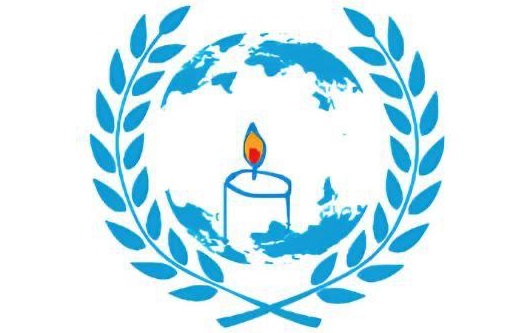AMENDS
To appropriately respond to historical crimes of colonization and the Transatlantic slave trade,
descendants of those who now carry the burden of atoning for those sins must accept that doing
so is their fiduciary and moral duty. Refusing to address these unresolved sins appears complicit
and undermines the emotional wounds of the victims’ descendants. Additionally, denying
responsibility in the face of legitimate accusations seems to endorse the actions of one's
predecessors. WCM is committed to working with all the relevant stakeholders for amends.
Transatlantic Homecoming in Memoriam
of
Victims of the Slave Trade

For over four centuries, more than 18 million people were forcefully removed from Africa and trafficked across the Atlantic Ocean to the Americas (including the Caribbean) and Europe to be enslaved, abused, and forever separated from their homes, families, and cultures.
Bound with ropes, chains, or wooden yokes, countless kidnapped African men, women, and children perished during the long journey from remote villages through extensive slave routes to coastal areas. Nearly two million people died during the brutal Middle Passage across the Atlantic Ocean. For those who survived the Middle Passage, many later succumbed because of the cruel and inhumane treatment they endured and the terrible conditions they faced on the plantations.
To meaningfully restore the dignity of millions of enslaved Africans whose deaths were never properly recognized or given a fitting burial, we are collecting soil from former plantations and sites of enslavement across the Americas, the Caribbean, and Europe, where enslaved Africans died under terrible conditions.
The soil, thought to still hold the sweat, tears, and blood of those who died in slavery, is placed in a wooden urn and taken by a funeral hearse to a local church for a funeral service that incorporates eulogies, music, cultural rituals, readings, and personal tributes to heal the emotional wounds of the victims’ descendants.
After the farewell service, the soil is carefully kept until it can be transferred to the ‘Tomb of the Unknown Slave’ at the Transatlantic Homecoming Memorial in Africa, where a large candle will burn in their honor.

Although Texas was one of the biggest cotton-producing regions in North America, it was sugar—rather than cotton—that changed the landscape of the fertile Lower Brazos, along North America’s Gulf Coast. Much as cotton plantations did, sugarcane plantations relied heavily on slave labor. Harvesting sugarcane was even more physically demanding than cotton picking. During harvest season, slaves worked tirelessly to cut the cane, extract the juice, boil it down, and load the final product onto trains for distribution nationwide.
The conditions on the Sugarland slave plantations were dreadful. Mosquito-borne illnesses, regular beatings, and inadequate medical treatment resulted in a 3 percent annual death rate. The plantation quickly became known statewide as the “Hellhole on the Brazos.”
Unfortunately, these deaths went unrecognized and lacked proper burials. To restore the dignity of the victims, soil was collected at the former Oakland Plantation, now known as Sugarland, a suburb with 90,000 residents located 30 minutes southwest of Houston along U.S. 90.

Rodney F Byrd Funeral Directors, together with representatives from the Center for the Healing of Racism, Friends of Sugarland 95, and World Colonization Memorial, carried a wooden urn filled with soil that is believed to still contain the sweat, tears, and blood of those who died in Sugarland.


A Rodney F. Byrd Funeral Director respectfully guides the process of honoring the lives of the enslaved Africans with dignity, respect, and compassion, as the wooden urn is solemnly carried to a funeral hearse.


Deputies from Fort Bend County Precinct 4 are preparing to escort the funeral procession from the Old Imperial Farm site to a nearby church, allowing the community to pay their respects and support the grieving descendants. The escort police officers were there to grant the funeral procession the right of way at intersections and other traffic points.

A solemn funeral procession of vehicles led by a hearse created a respectful, slow-moving convoy as a final tribute and public display of honor for the victims. The vehicles used light bars and special flashers to ensure they were easily recognizable.

Funeral service led by The Rev. Eric D. Phillips at Thompson Chapel Missionary Baptist Church, which was founded in January 1880 by former Sugarland slaves.

The funeral service served as a central point for shared grief, bringing people together in a collective experience of mourning and fostering mutual support.
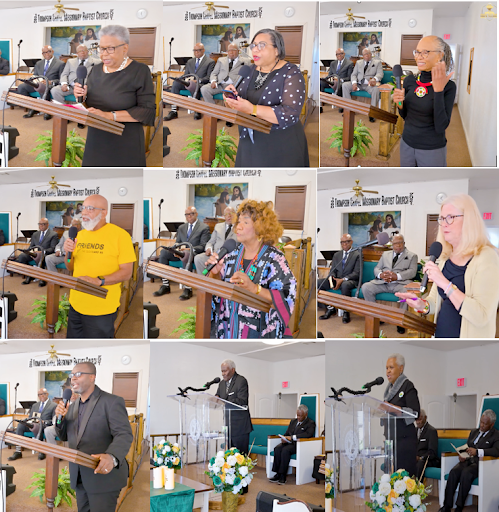
The funeral service included eulogies from some of the victims’ descendants and community leaders. The main tribute consisted of music, cultural rituals, readings, and personal stories.
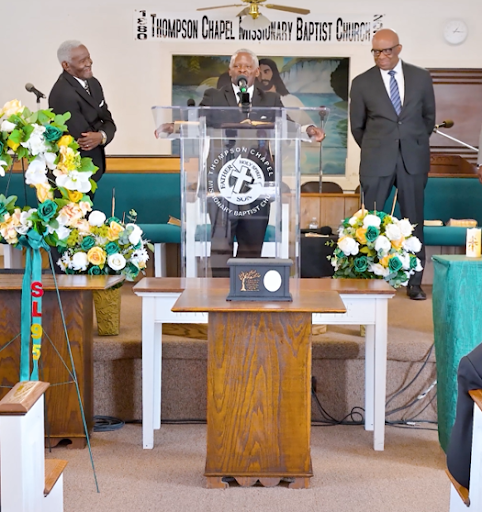
The committal service by Rev. Eric D. Phillips was the final portion of the funeral rite.
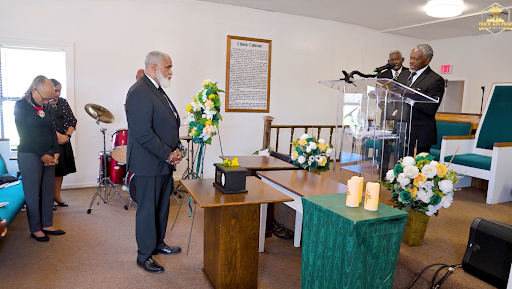
Rodney F. Byrd, Funeral Director, was invited to place a flower on the urn as part of the final farewell.
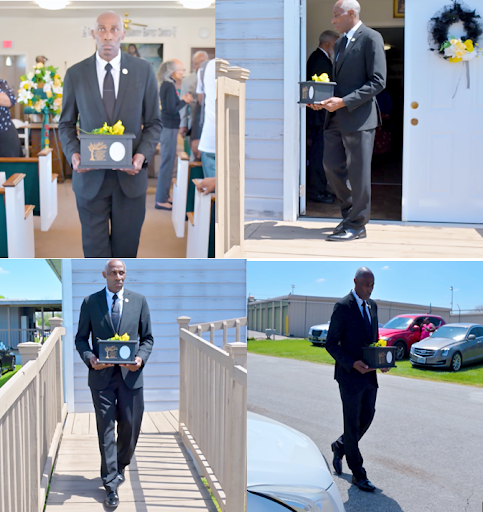
At the end of the funeral service, a Rodney F. Byrd Funeral Director respectfully transferred the urn from the church to the hearse.
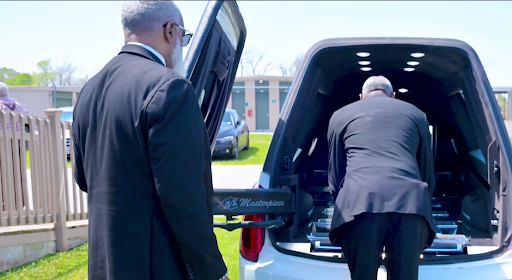
After the farewell service, the soil is solemnly placed in the hearse, taken to a place where it is carefully kept until it can be transferred to the ‘Tomb of the Unknown Slave’ at the Transatlantic Homecoming Memorial in Africa, where a large candle will burn in their memory.
